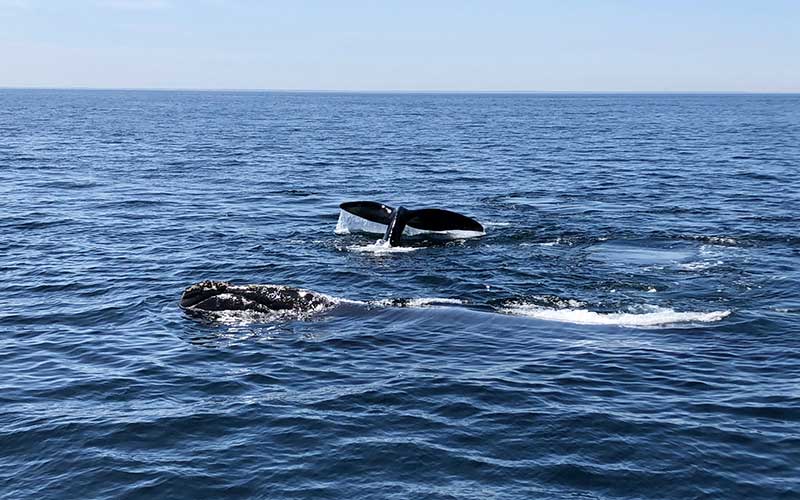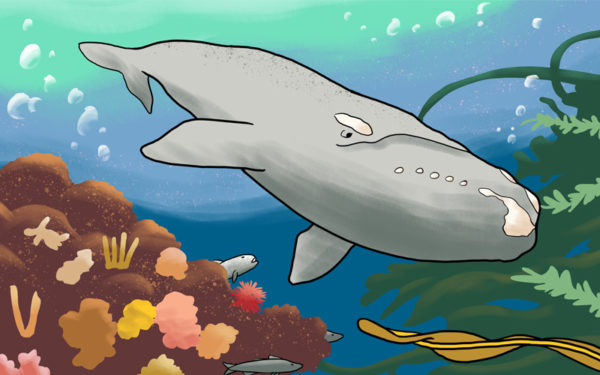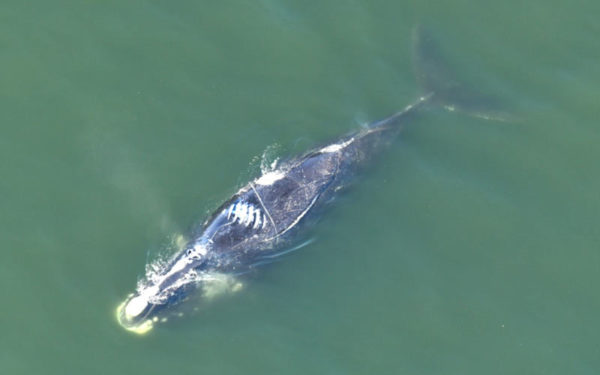
Because the North Atlantic right whale population is so small, spotting one in the wild is rare. But thanks to technology, you can learn about the whales' stories and where they are. Photo: Priscilla Brooks
North Atlantic right whales are on the brink of extinction. So few remain on the planet that your chances of spotting one of these unique creatures in the wild are sadly slim. However, thanks to technology, we can track the latest intel on New England’s native whales, including up-to-the minute sighting information.
The Right Whale Population is Dangerously Small
The alarming status of the North Atlantic right whale has been in the news a lot lately. 2017 was a particularly devastating year for the species, with 17 documented deaths. With barely 450 individual whales left, that means roughly 4 percent of the population died last year.
North Atlantic right whales are expected to be “functionally extinct” – a population so small it can’t recover – within 25 years if we don’t act now.
This year, two deceased right whales have been found. One was a young female just reaching reproductive maturity, her body entangled in fishing ropes. Last month, the remains of what appears to be the second right whale death this year washed up in Virginia. To make matters worse, the calving season has come and gone, and not a single calf has been spotted.
That’s why CLF has demanded that the federal government take immediate action to address the right whales’ plight. We’re using the courts to ensure that fishery managers are following important federal statutes, like the Endangered Species Act and the Marine Mammal Protection Act. CLF is also making sure that the public understands this critical issue by sharing the history of right whales, solutions to the current crisis, and, of course, updating you on tools you can use to track right whales yourself.
Find Out Where Right Whales Are Right Now
Ready to go whale watching from the comfort of your couch? Every spring, whales migrate up the busy eastern seaboard from Florida to Maine, then move on to Canada for much of the summer. To find out where whales have most recently been spotted, check out NOAA’s Interactive North Atlantic Right Whale Sightings Map.
Canada’s Department of Fishers and Oceans also maintains an interactive map that’s updated every five minutes. It uses aerial, acoustic, and sighting data from multiple sources in Atlantic Canada. Many right whales are currently in the Bay of Fundy, just north of Prince Edward Island.
Both of these resources also contain information about regulatory restrictions, like seasonal management areas, to help reduce ship strikes – the second leading cause of right whale deaths behind entanglements in fishing gear.
If you do leave your house and get out on the water, download the Whale Alert app so that you can easily report any sightings of your own. Just remember to stay 500 feet away from any whales you spot.
Every Right Whale has a Name and Unique Story
Scientists at the New England Aquarium keep track of every single North Atlantic right whale. This amazing compilation contains photographs of each whale, illustrations depicting identifying features, and whales’ birth years, as well as when and where each has been sighted. It is a fantastic resource, particularly if you’ve spotted a whale and want to try to identify it.
Just one of the hundreds of whales in the database is Clover, a female right whale born in 1986. She has had calves and was last seen in 2015 in the Bay of Fundy.
The sad reality is that because so few North Atlantic right whales remain, tracking them from home may be as close as most people will get. But getting to know these whales – their names and their stories, even through a tracking app and a web portal – is one critical way we can all ensure that these whales are not just a legend from New England’s past, but a visible and vibrant part of our present.
And, with swift action and additional protections, we can bring North Atlantic right whales back from the brink of extinction and give them a fighting chance for the future.



